You Need To Know About 27 Powerful Tips and Ideas for Colonial Kitchen
Updated: 19 July 2024
85
Tips and Ideas for Colonial Kitchen
Colonial-style kitchens bring a rustic, inviting feel that blends elements of farmhouse charm with traditional elegance. The goal is to create a Colonial-inspired kitchen that retains the conveniences of modern appliances like air fryers and espresso machines. Here’s how you can achieve a modern Colonial kitchen design that feels timeless and sophisticated.
you can also read:
What Is The Best Solution To Clean Kitchen Cabinets?
Top Ideas For White kitchen Cabinets with Black Hardware:
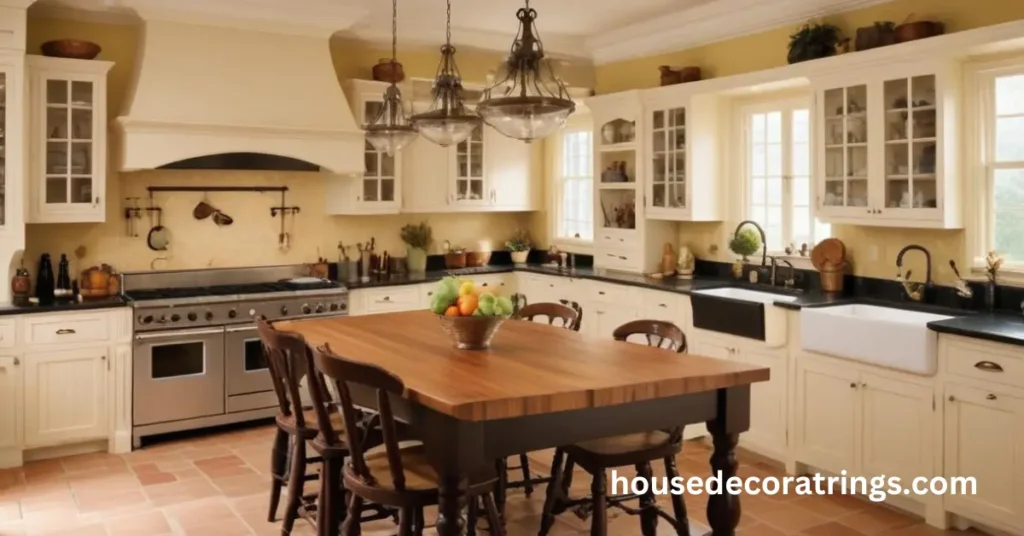
The Appeal of Colonial Kitchens
Samantha Tosti, principal designer and founder of Tosti Design, believes that infusing Colonial style into modern kitchens creates a timeless look. According to Tosti, warm earthy tones paired with shades of blue and green are ideal for this style. She suggests adding details like beads to Shaker-style cabinets for a refreshed appearance.
Pamela O’Brien of Pamela Hope Designs praises Colonial design for its warm and welcoming atmosphere, which feels authentically American. She notes that certain elements are essential for creating Colonial charm in a modern kitchen.
Combining Black and Brown for Colonial Kitchens
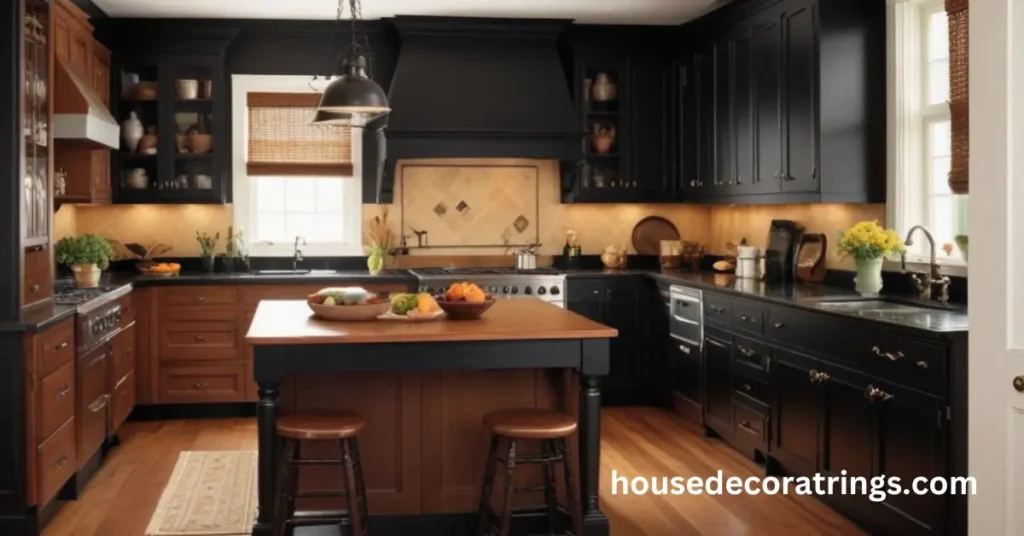
Though some may hesitate to mix black and brown, this color combination works beautifully in a Colonial kitchen. These dark shades complement the natural materials and wooden elements typical of Colonial homes.
Modern Touches with Antique Elements
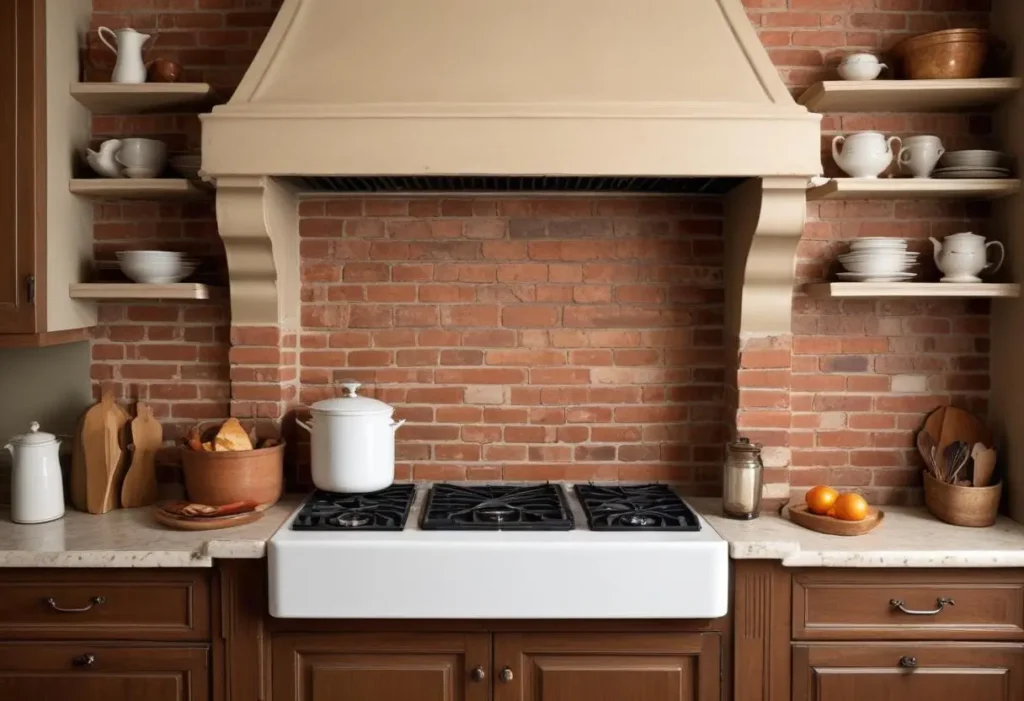
Incorporate modern and antique elements to update a Colonial-style kitchen. Tosti suggests using a renewed style of brick for the backsplash and integrating your favorite antiques to add authenticity.
Mixing Metal Finishes
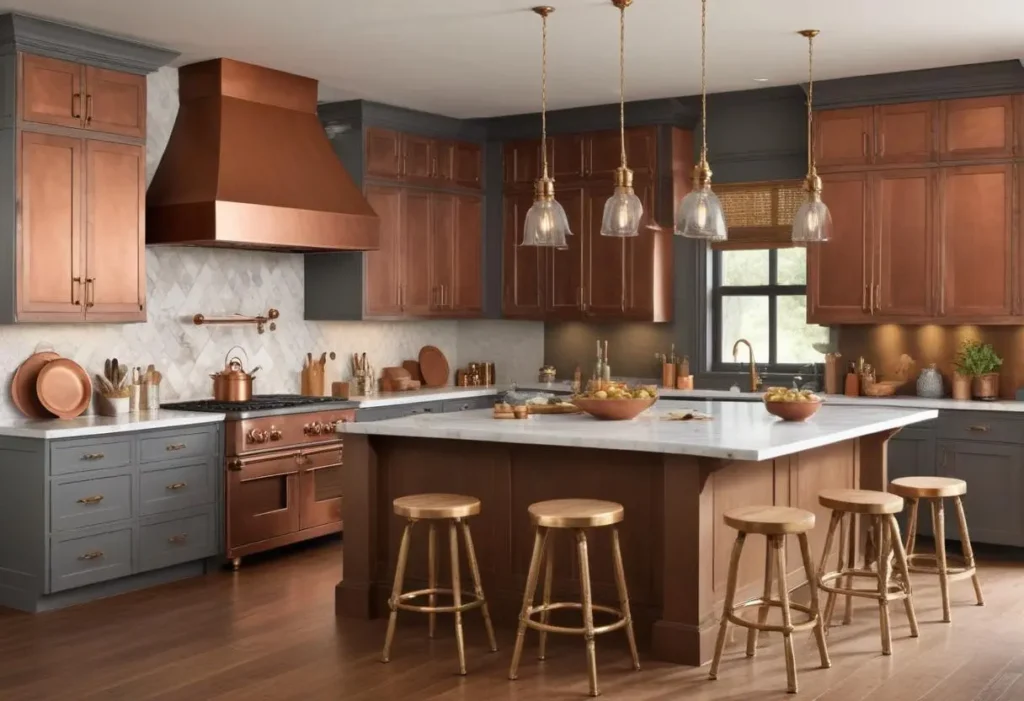
Copper elements are a staple in Colonial kitchens and pair well with gold hardware. These metallic finishes, when used sparingly, create a beautiful contrast and add glints of light to the rustic and earthy aesthetic.
Introducing Unexpected Shapes
Modernize the dark wooden elements of Colonial style with funky shapes and silhouettes. The squiggles and waves that have gained popularity recently can stand out boldly yet fit seamlessly into the overall design.
Incorporating Copper Accents
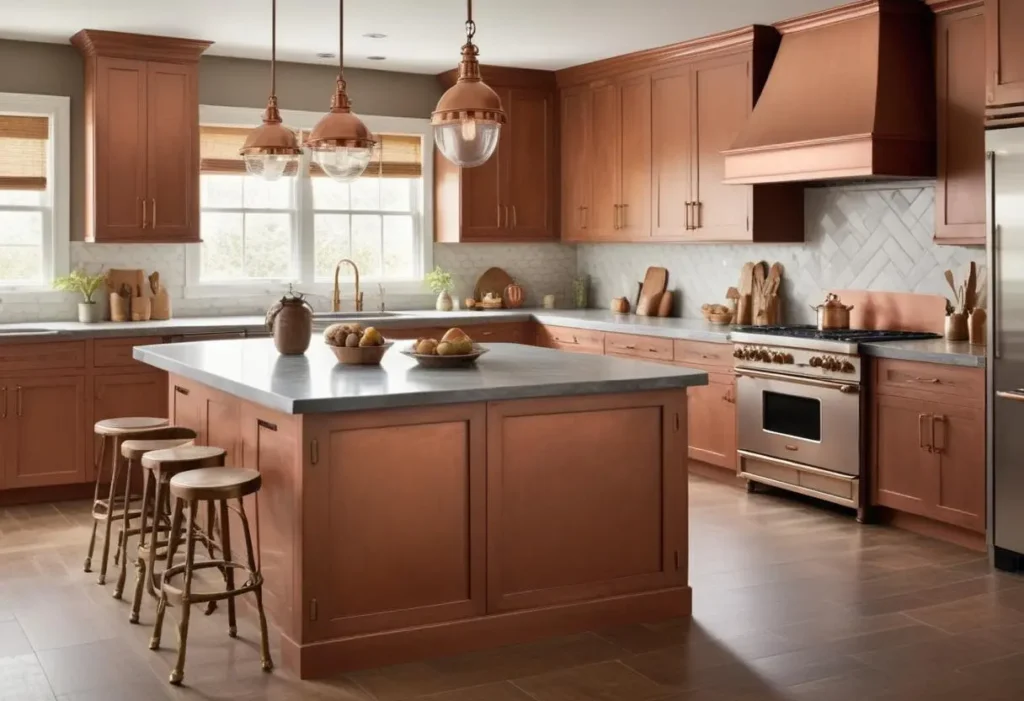
Copper accents bring a historical touch to a Colonial kitchen. O’Brien recommends hanging copper cookware, antique bellows, or match holders on the walls and displaying crockery and pottery pieces on shelves or in glass-fronted cabinets.
Adding Glossy Surfaces
To blend modern style with Colonial design, use glossy tiles and accents. Light-colored glossy tiles work well with cream-colored cabinets, while dark swatches provide a striking contrast with dark countertops.
Subtle Color Choices
Colonial kitchens often feature stained or painted wood cabinets in simple designs. O’Brien suggests using medium stains or colors like dusty blue and earthy red. If these hues feel too intense, try a muted green for a softer look.
Emphasizing a Large Cooking Space

Colonial kitchens traditionally had large hearths and tables for meal prep. If space allows, focus on creating a large cooking area with a big oven or stovetop, framed by lights, a Shaker-inspired range hood, and open shelving. A large island or dining table completes the look.
Leveraging Natural Elements
Exposed wooden beams and other structural features can be the foundation for a Colonial kitchen. Incorporate copper, deep shades, and more wood to enhance the Colonial feel.
Using Antique-Inspired Appliances
Modern appliances can coexist with antique-inspired items like golden tea kettles, cast iron pans, or ladles to reinforce the Colonial theme.
Incorporating Modern Lighting
Balance the dark colors and woods of Colonial style with modern light fixtures to keep the space bright and functional. Exposed wooden beams look stunning with white and gold pendants or wall-mounted bulbs.
Keeping the Structure Simple
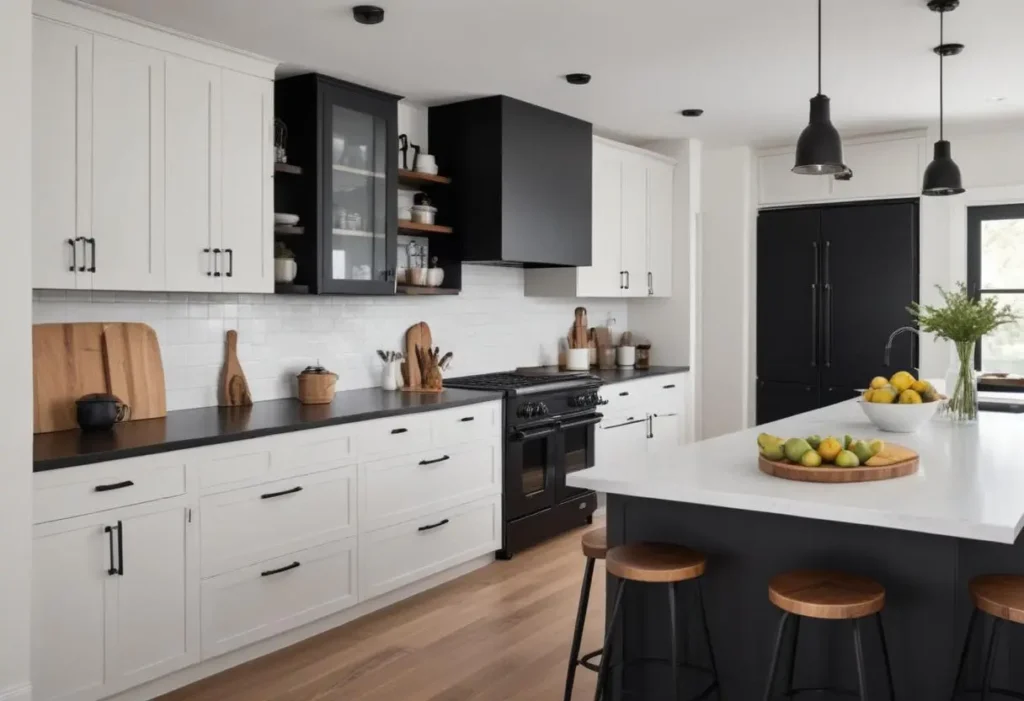
Colonial style often features rough-hewn, raw, and simple structures. Using tones like brown, white, and black, your kitchen can take on an old-world flair while remaining modern.
Adding Natural Fabrics
Natural fabrics were prevalent in Colonial times. Use materials like linen, flax, or cotton in light fixtures, napkins, pot holders, placemats, baskets, wooden bowls, and utensils to reflect this style.
Embracing Wooden Features
Wood was essential in 17th and 18th-century homes. Incorporate wooden cabinets, islands, hutches, utensil holders, and lazy Susans to create an authentic Colonial kitchen.
Giving a Subtle Nod to Colonial Style
If a full revamp isn’t your style, small touches like wooden shelves, cast iron pans, and lantern-like light fixtures can hint at Colonial design without a complete transformation.
Incorporating Ambient Lighting
To achieve a Colonial ambiance, use pendant lamps or wall-mounted lights with mood lighting in addition to bright, functional kitchen lights.
Balancing Deep and Light Shades
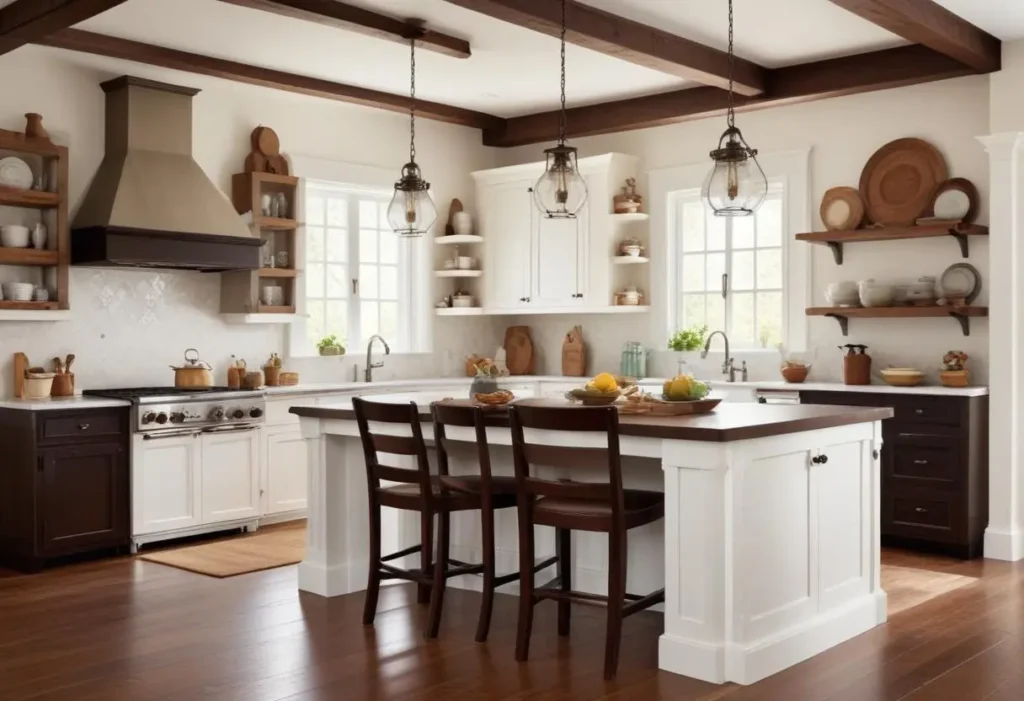
Pair white Shaker cabinets with exposed dark brown beams, wooden islands, and brown chairs for a kitchen that feels both timeless and Colonial-inspired.
By blending these elements, you can create a Colonial kitchen that exudes historical charm while embracing modern functionality.
Utilizing Wrought Iron Accents

Incorporate wrought iron hardware and accessories to bring a touch of Colonial craftsmanship to your kitchen. Items like drawer pulls, light fixtures, and pot racks made from wrought iron add an authentic, old-world feel.
Creating a Butcher Block Countertop
A butcher block countertop can enhance the rustic charm of a Colonial kitchen. The natural wood surface is not only practical for food prep but also adds warmth and character to the space.
Installing a Farmhouse Sink
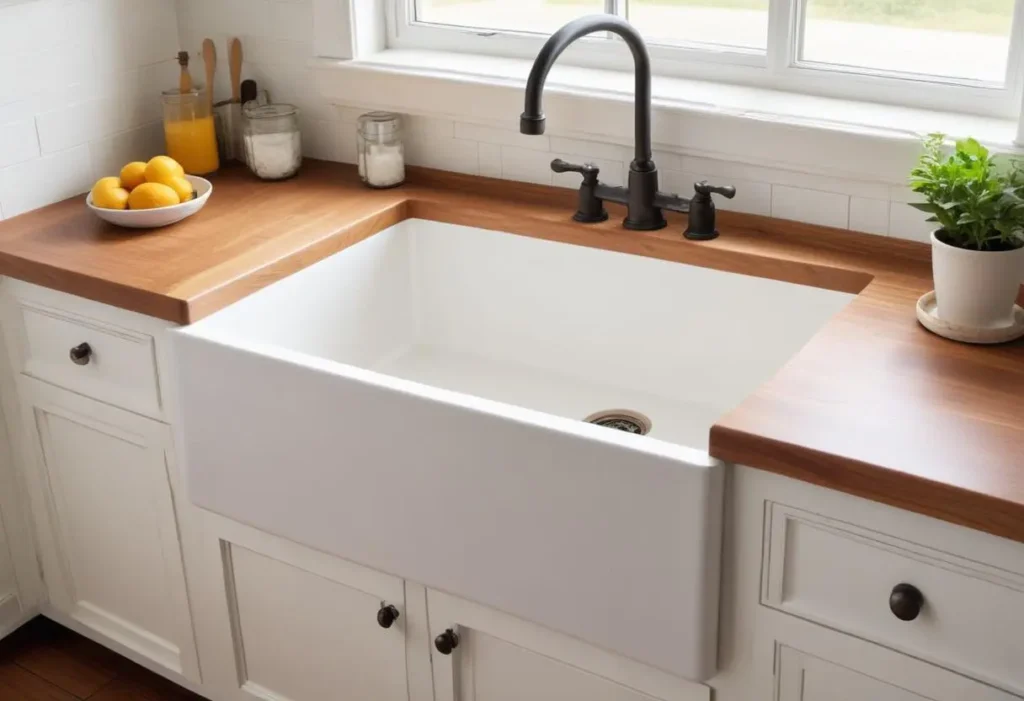
A deep, apron-front farmhouse sink is a nod to the practical, utilitarian style of Colonial kitchens. Opt for a white porcelain or hammered copper sink to maintain the historical look.
Using Peg Rails for Storage
Install wooden peg rails along the walls to hang kitchen tools, pots, pans, and dish towels. This simple and effective storage solution is reminiscent of Colonial-era kitchens.
Integrating a Brick or Stone Fireplace
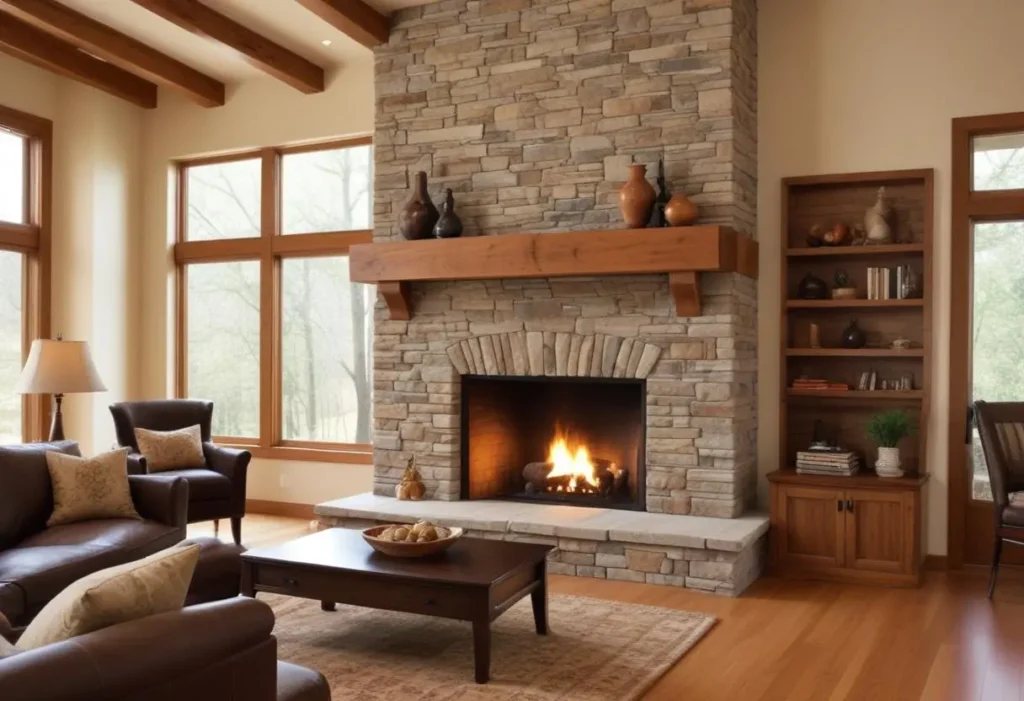
If space and structure allow, consider adding a brick or stone fireplace to your kitchen. This feature can serve as a focal point and bring the traditional hearth concept into a modern kitchen.
Choosing Antique-Style Faucets
Select faucets with an antique look, such as those with cross handles and a weathered finish. These small details can significantly contribute to the Colonial ambiance.
Displaying Vintage Kitchenware
Showcase vintage kitchenware like wooden rolling pins, old-fashioned scales, and ceramic mixing bowls on open shelves or countertops. These items add charm and a sense of history to the kitchen.
Incorporating Handcrafted Tiles
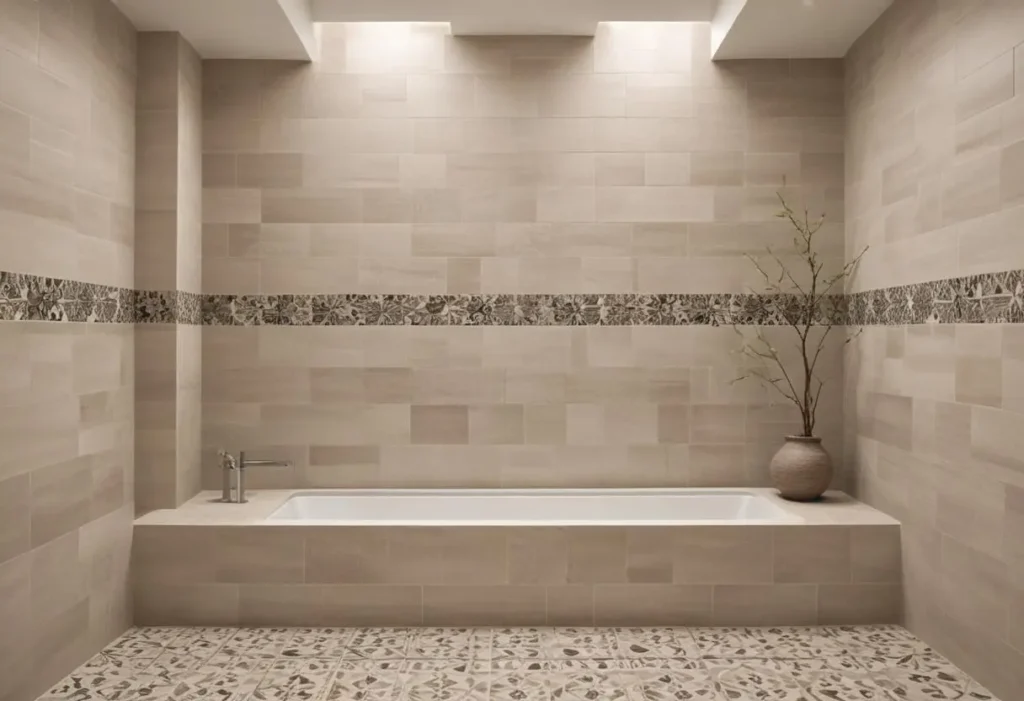
Use handcrafted tiles for the backsplash or flooring to add a unique, artisanal touch to your kitchen. Look for patterns and colors that complement the Colonial style.
Adding Built-In Cupboards
Built-in cupboards with glass fronts can mimic the look of Colonial pantries and provide practical storage space. Fill them with crockery, glassware, and pantry items to maintain an authentic feel.
Choosing Heirloom-Quality Furniture
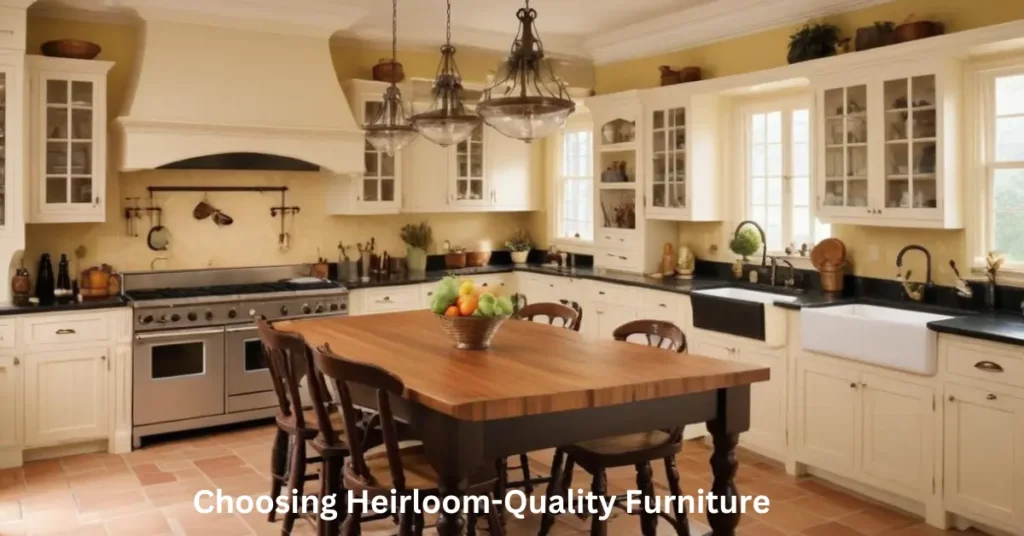
Opt for heirloom-quality furniture, such as a solid wood dining table and chairs, to enhance the Colonial theme. These pieces should be sturdy and timeless, reflecting the durability and craftsmanship of the era.
Conclusion
Designing a Colonial kitchen involves blending historical elements with modern conveniences to create a space that is both charming and functional. By incorporating features like wrought iron accents, butcher block countertops, farmhouse sinks, and vintage kitchenware, you can achieve a kitchen that pays homage to the past while meeting the demands of contemporary living.
The key is to balance rustic, old-world charm with the practicalities of modern design, resulting in a timeless and inviting kitchen space. Whether you choose to fully embrace the Colonial style or simply add subtle nods to it, these ideas will help you create a kitchen that feels warm, welcoming, and uniquely yours.
FAQs About colonial kitchen
What is a colonial kitchen?
A colonial kitchen is defined by a large brick fireplace, historically used for cooking. The fireplace typically opened into the kitchen with a floor-level stone hearth and was topped by a large mantle.
What would a colonial kitchen look like?
A colonial kitchen, reflecting 17th and 18th-century styles, typically features white cabinetry, understated paint colors, exposed brick walls, and natural wood flooring, embodying early American classic kitchen design.
What are the colors of a colonial kitchen?
Colonial kitchens feature a calm, neutral color palette with earth tones and muted shades. Common wall colors include cream, white, pale yellow, and blue, while cabinets and accessories often feature deep shades of gray-blue, brick red, brown, and olive.
Please Write Your Comments